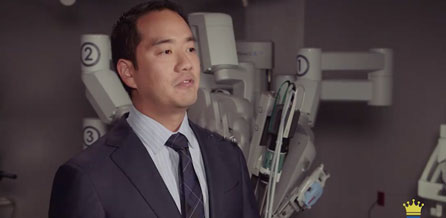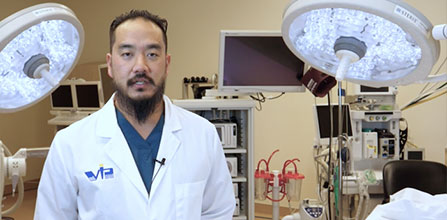Gastric Band to Gastric Sleeve Conversion
One of the most popular secondary bariatric procedures that we perform involves the removal of the gastric band and the conversion to a gastric sleeve. About 10 years ago, the gastric band was gaining in popularity as it was the only fully-adjustable and reversible bariatric procedure. It offered patients flexibility to have weight loss surgery without the commitment to an irreversible procedure.
The need for a band-to-sleeve conversion is due to the fact that approximately 20 to 30% of gastric banding patients will not achieve the results they expect, or will have complications that force them to remove the band. Removal of the band, alone, is possible, but most often leads to regaining weight that the patient previously lost. Converting the procedure to a gastric sleeve or sleeve gastrectomy allows the patient to continue their postoperative bariatric lifestyle with a surgical tool that offers even better results. We most often convert the band to a sleeve because the sleeve maintains the purely restrictive nature of the procedure. However, if the patient is experiencing poorly controlled type II diabetes, or has severe acid reflux, a gastric bypass may also be considered.
How the Band-to-Sleeve Conversion Works
Before we determine that a conversion is necessary, we want to ensure that it is not just a simple lifestyle change that gets the patient back on track. After consulting with one of our surgeons and working with a nutritionist and psychologist, if we determine that the band is not offering the proper results, we may move forward with the conversion.
Most of our conversions are performed robotically and can often be completed on an outpatient basis, meaning that the patient does not need to spend the night in the hospital. Below, you can see a band-to-sleeve conversion narrated and performed by Dr. Tsuda:
After creating the incisions in the abdomen and docking the surgical robot, we begin by exposing the Lap-Band, which will often be surrounded by scar tissue. The next step is to unbuckle the Lap-Band and remove it from the abdomen. In the video you just watched, Dr. Tsuda felt it most prudent to cut the band in half before removing it from the abdomen.
Once the band is removed, a regular gastric sleeve is performed since no part of the gastrointestinal system has been altered. You can learn more about the gastric sleeve procedure here.
Risks of A Band-to-Sleeve Conversion
The risks of a revision or conversion bariatric procedure are slightly greater than a primary procedure because of scar tissue and abnormal anatomy, which is why it’s important to work with a surgeon experienced specifically in revisional bariatric procedures who will go over your unique risks in detail. We will most likely encounter some complexities due to scar tissue buildup and adhesions, which is why we most often employ the robotic surgical system. Our biggest concern is the general health of the patient, along with their surgical risk. Otherwise, the qualification criteria for a band-to-sleeve conversion is essentially the same as a straightforward gastric sleeve primary procedure.
Next Steps
While many experience excellent results with their gastric band, there is a subset of patients that may not have lost as much weight as they or their surgeon expected, or who may be experiencing significant side effects from their band. It is important to remember that you have not failed and that you are not alone. There are ways to correct this and move forward with a more suitable bariatric procedure. Learning more, however, starts with a consultation with either of our bariatric surgeons – Dr. Tsuda or Dr. Ryan. Understanding your options and whether a band-to-sleeve conversion is right for you is the first step toward correcting your primary procedure and moving forward with your weight loss goals.



